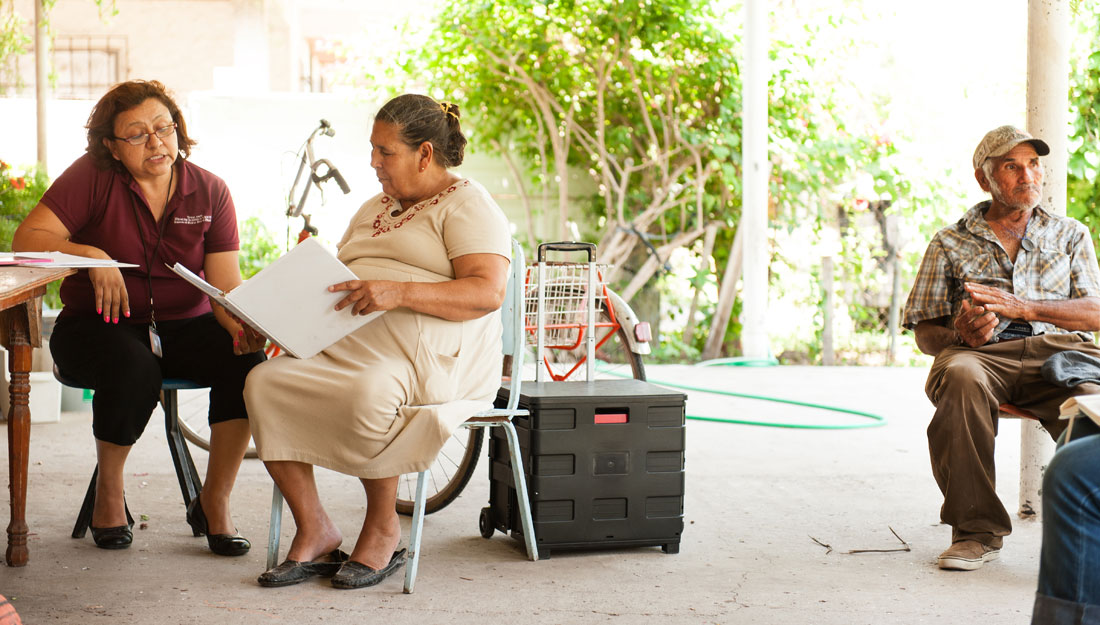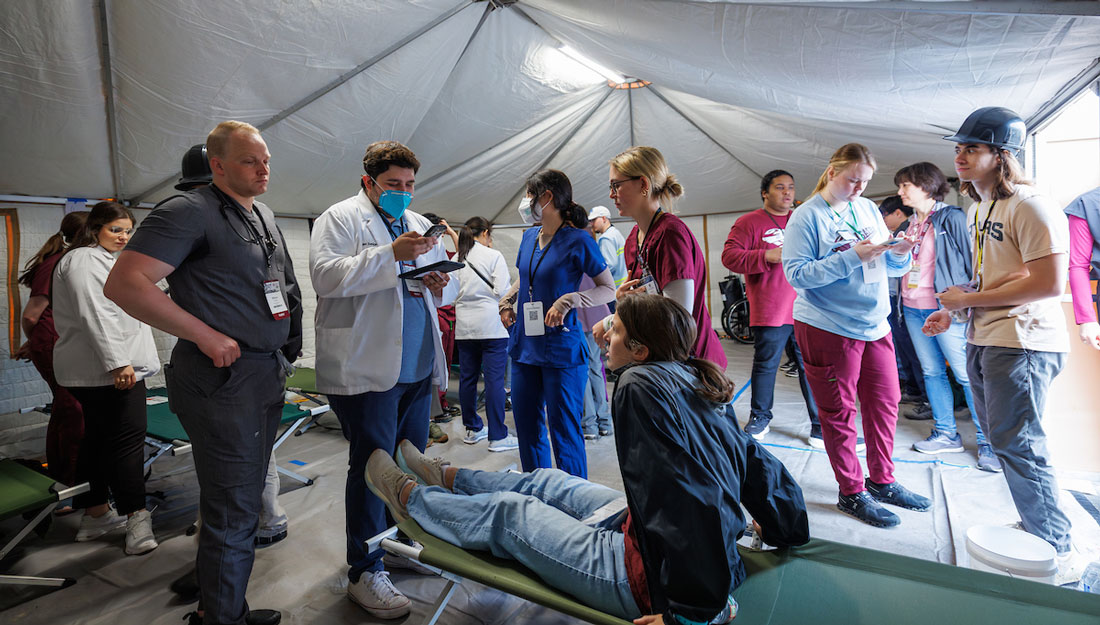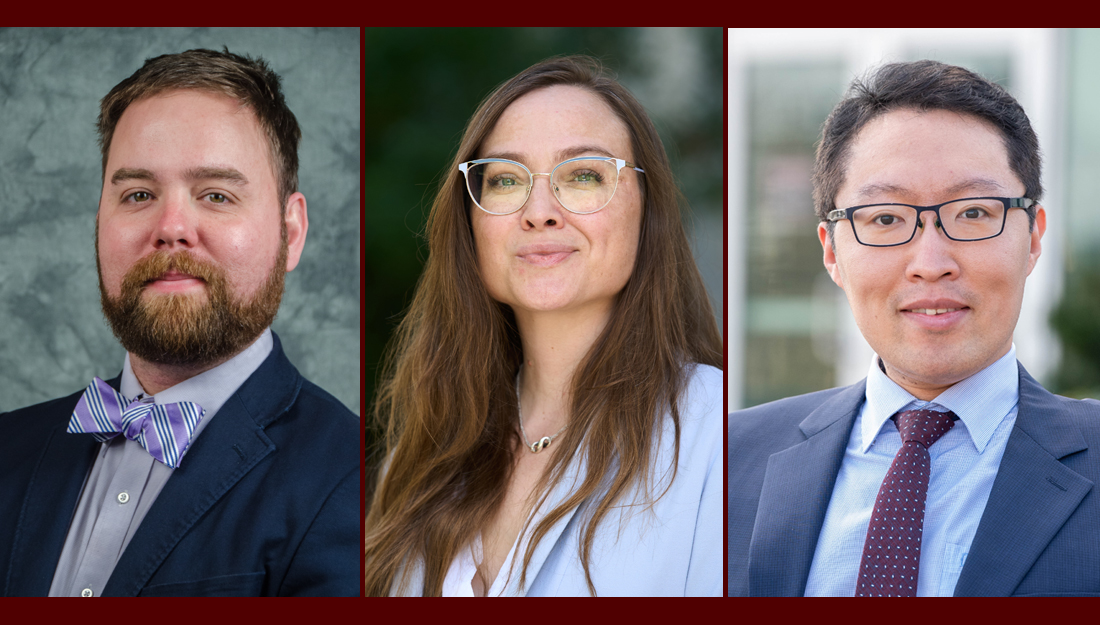The hands that give: Community health workers provide more than just health education

Imagine for a moment that you recently lost your job you’ve held for more than a decade (it’s nothing you did, the plant had to cut back). Now, you’re searching frantically for a replacement, but in the meantime, there’s rent to pay, electric and utility bills, groceries to buy – and you’re not the only one affected by this chain of events: your eight-year-old son’s asthma prescription is due for a refill this week and your ten-year-old daughter is crying in pain from a cavity. Their mother passed away last year; her cancer treatments drained your savings and sucked the life out of you. Now, to top it off, your doctor is upping your diabetes medications and is talking about dialysis, vision loss, mobility issues… You look around and think, So, this is what rock bottom looks like.
Then Mary calls.
“Mr. Rodriguez, my name is Mary Peralez from the Texas A&M Health Science Center. I’m calling because I just received a referral from your doctor to attend our Diabetes Education Program. How are you doing?”
Mary’s voice is warm. She really is interested in knowing how you are doing, and you can’t help yourself, so you lay it all out. At the end, Mary offers you a little prayer then utters those five life-saving words: “I think we can help.”
As a community health worker with the Texas A&M Health Science Center’s Diabetes Education Program in Corpus Christi, Texas, Mary is committed to helping her clients attain health, no matter the obstacles.
“Our ultimate goal is to help our clients gain control of their diabetes, but for many, it’s not just about eating healthier, getting exercise and taking their medications, because they might not be thinking about their health right now. Right now, they need to find a place to live or food to eat or clean water to drink. Once they secure those things – those basic survival needs – then we can start talking about managing their disease,” Mary said.
Diana Alvear, another community health worker with the program, talks about a client who had a particularly strong impact on her.
“He came in one day after being through the program and said, ‘I was planning on ending it. I was going to jump off the Harbor Bridge.’ He said if it wasn’t for us, he wouldn’t be here today. I thought, wow. You just never know how deeply you’ll impact someone’s life.”
Diana and her team met this client (who, for his protection, will remain unnamed) after sending postcards with personal notes to the homeless shelter where he was staying. He came to the program with the postcard folded up in his hand and told them he was going to give his stuff away and commit suicide that day. Diana walked with him across the street to the Behavioral Health Center and stayed with him while the crisis intervention team provided assessment and intervention.
“It didn’t just stop there,” she said. Diana and the team of community health workers at Texas A&M continued making contact with him, connecting him with resources, and even helped him apply for social security disability benefits. They remain in touch even though he’s since moved to a different city.
Community health workers are a vital part of the Texas A&M Diabetes Education Program. They are the first point of contact and remain the primary connection between the program’s patients and health care providers. They assist with everything from scheduling appointments, obtaining blood glucose monitors, and they even make home visits if needed to take basic lab work. During class, they provide extra support to those who can’t read and make sure materials are accessible to everyone, whether that involves translating to Spanish, enlarging font or printing extra copies. They have even jumped through hoops to secure a personal translator for a client who is deaf.
What makes community health workers unique is that they are able to connect to clients on a peer level. They are usually not formally trained health care providers, but they can provide informal counseling, take basic lab work (such as blood glucose levels, blood pressure and heart rate) and reinforce health care providers’ recommendations. They also connect clients with additional resources, like shelter, transportation, food, financial assistance, medication assistance and even shoes.
“The biggest challenge for us is that we can only tackle one issue at a time,” Diana said. “How do you pick? You see how in need some of our patients are and you want to immediately address everything. But it has to be one thing at a time. One step at a time.”
They even take food from their own pantries to feed their clients. “We can’t help it. It’s what we do. We help,” Diana said.
The Texas A&M Diabetes Education Program currently has nine community health workers in four Coastal Bend counties, and has plans to expand into 27 counties, extending from Lake Jackson, down to Brownsville and across to Laredo, Texas as part of the Healthy South Texas initiative. By providing continuous, supportive and effective care for people with diabetes, community health workers are a key component to increasing the quality of care and improving diabetes outcomes in low-income populations.
Media contact: media@tamu.edu


